Getting Back to Basics
- Feb 22, 2023
- 6 min read
The CMP Fund was created in 1996 by the Centers for Medicare and Medicaid Services for the purpose of supporting activities that benefit nursing home residents, including projects that assure quality care within nursing home.[1] In the 27 years since the program was implemented, it has seen changes in the way those funds are used to benefit the residents of long-term care. CMP funds are utilized most often for resident-focused programs that enhance quality of life, or staff-training programs that enhance quality of care. As the CMPRP program has taken off, many of these projects are replicating from state to state, prompting CMS to enact the “Extension Project” in 2018.
The use of technology – for resident-focused activities or for staff training – is one of the most prevalent themes in the CMP Reinvestment Program. Interactive technology has enabled residents to connect to a bigger world outside of the facility – taking trips to foreign countries as a group activity or using iPads to communicate with loved ones during restricted visitation brought on by the pandemic. Technology has enabled staff training to be delivered to more people, more effectively than the traditional in-person education. While these projects have met and sometimes exceeded the standards of improving quality of life for residents, there are also ‘basic’ projects that we’ve moved away from as the bigger, more advanced projects have taken the reins. These projects are ‘tried & true’ in the world of resident satisfaction, and many have been used since the implementation of the CMP Reinvestment Program. If you are thinking about a CMP project that would fit your facility but aren’t sure where to start, here are a few ideas to get your creative juices flowing.

Art Therapy
There is a concept that creative aging – or aging through the arts – provides enjoyment and the ability to embrace the aging process. According to AARP, ‘Arts programs make sense: Older adults respond to stimulation and social interaction, and art, drama, dance and musical activities provide them with new ways to connect with caregivers. Gene Cohen studied the influence of the arts on older adults and found that when the adults engaged and learned something new, physical, and emotional benefits followed. Cohen's findings and subsequent research suggest that creative expression programs can reduce pain, the need for medication, falls, depression and loneliness — while increasing mobility, helping cognition and making participants feel valued.’ [2] The term ‘therapy’ implies the use of a professional to lead or facilitate, while the term ‘art’ can reference any type of creative expression – from painting or other mediums, dance, theater, etc. An art program is a project that can be developed and implemented by a single long-term care facility or an entity willing to serve a group of facilities.
Music Therapy
Music is powerful. It can evoke emotions, bring back memories, provide calm, or set the tone in a room. It can be enjoyed as a group or alone. And it is often used in long-term care facilities. Listening to music is a passive endeavor that can be easily accomplished by a radio, CD player, or digital device. [3] In other words, music is for everyone. While music-based projects are sometimes passed over in favor of larger, more sophisticated projects, they should not be dismissed because of their simplicity. There is plenty of research that supports the therapeutic effects of music on cognition, emotional wellness, and physical activity. Simple musical instruments can encourage movement and stimulate senses. The use of music from different eras can generate conversation in small groups, likely evoking positive memories that can be shared. Individualized playlists loaded onto digital devices can be used to calm residents with anxiety or dementia.
Pet Therapy
If you’ve ever visited a long-term care facility that has a pet, you’ll likely get a formal introduction during your visit! Even residents who aren’t ‘animal lovers’ keep treats in their rooms or tucked beside them in their wheelchairs to offer the resident cat. Some residents offer up a spot on their bed to sleep and others are happy for an affectionate pat on the head. According to one article ‘Animals have long been recognized as being a positive force in the healing process. They also offer physical contact with another living creature, something that is often missing in an elder’s life. Best of all, they divert a person’s attention from the pressing problems of the day. For long-term elders, is it not so much the stress of daily problems, but the boredom, loneliness, and lack of control. Dogs love almost everyone without prejudice, and they eliminate the language barrier. Often, they are aware of illness and sadness and WANT to provide companionship and comfort; they are both intuitive and compassionate.’[4] Pet therapy – whether can be provided by an in-house pet or by a service that provides visits to the facility. There is also research to support the benefits to the emotional and physical well-being of long-term care residents.

Life-Review or Life-Story Projects
It’s no secret that older adults are a well of wisdom and many are often more than happy to share it! If you work in or frequent a long-term care facility, you will find at least one, or two, or ten ‘story-tellers’ – or residents who will tell you about some aspect of their life if you give them a few minutes of your time. Story-telling gives people an opportunity to connect with other individuals. It also gives them the chance to reconnect with their past and remember events that brought them happiness. Life-reviewing is an important part of the aging process. Life-review and life-story projects can be done in many forms – using scrapbooking or shadow boxes, or putting together professional “books” with pictures, captions and stories that narrate the individual’s life. A long-term care facility in Wisconsin implemented the CMP-funded “Write Your Life” project in 2017, which used high-school students to help long-term care residents create personalized storybooks, which were then ‘published’ and presented to residents at the end of the project. This is just one example of how using life-review – and the community – can benefit long-term care residents.
Multisensory Environments
Multisensory environments are popular with many types of special populations because they induce a calming effect. Individuals with cognitive disorders, mental health disorders, dementia, and other diagnosis benefit from these types of environments. A popular MSE is the Snoezelen Room, however this type of project can be implemented in any form. One example might be a multisensory ‘station’ for residents to use. The use of adaptive equipment such as the WhisperGLIDE can help residents enjoy things that they are unable to do because of physical limitations, such as enjoying an outdoor swing with family and visitors. Don’t disregard the implementation of a smaller project to have a big impact on your residents.
Staff Training
Staff training that increases the quality of care for residents is an allowable use of CMP funds. More recently used training has involved person-centered care, wound care, dementia training, and telemedicine. Two common issues that are present in most long-term care facilities: Mental Health and Death & Dying. And unfortunately, there isn’t a great deal of training that is offered to support the prevalence of these two issues.
Mental Health is a looming issue in most long-term care facilities across the nation, with ‘between 65% and 90% of nursing home residents’ being identified as having a mental health diagnosis.[5] Staff need training in de-escalation and crisis prevention to protect these residents, themselves, and other residents in the facility. There is also a dire need for additional training on mental health diagnosis, treatment, and management. Long-term care staff depend on psych services that are often outsourced to provide this treatment and seldom have in-house professionals to deal effectively with situations that arise because of a mental health diagnosis.
Training that focuses on Death & Dying is also essential for staff in long-term care. Nursing Homes are sometimes ill-equipped to deal with the dying process – from providing pain/symptom management to offering bereavement to family, other residents, and one another. Palliative and comfort care is sometimes left to the hospice team, and nursing home staff negate their vital role in end-of-life care. A 2017 CMP-funded project in Georgia, ‘Changing the Culture of Death and Dying in the Nursing Home Setting’ was used to provide best practices training to facility staff, residents, and family members. Death is something that residents and staff will commonly face in the long-term care setting. Providing the training to provide effective care and support is necessary.
Conclusion
Don’t underestimate the power of a ‘basic’ CMP project to bring positive changes to the lives of your residents. If your project is resident-driven, includes goals that can be measured to show its effectiveness, and the project supports the culture of your facility, you are already on the right track for implementing a successful program.
You can find more information about CMP Projects and CMP Extension Projects on our website. There is also a list of CMP funded projects nationwide on the CMS website.
[1] CMS Federal Grant Opportunity | CMS
[2] Creative Arts Program Provides Social Interaction, Stimulation (aarp.org)
[3] Music therapy: Nursing interventions with a beat: Nursing2020 Critical Care (lww.com)
[4] Therapy Dogs in the Long-Term Health Care Environment
[5] Mental Health in Nursing Homes | Managing Emotional Health (nursinghomeabuse.org)

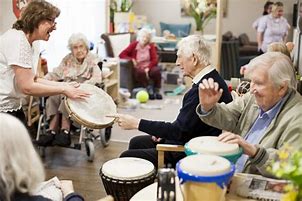
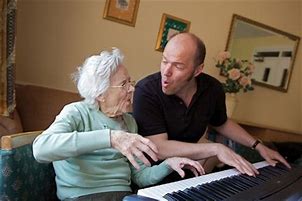

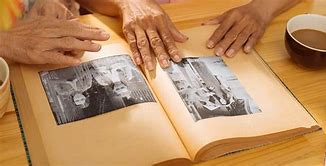

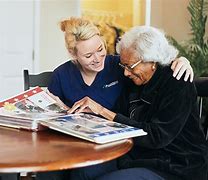
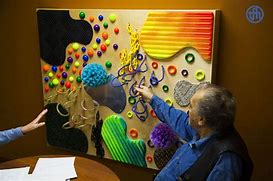
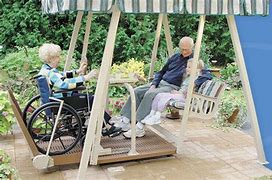



Comments